Walking Hadrian’s Wall: Part II
In Part II of exploring my recent Hadrian’s Wall experience, I will take you through some of the stops (forts and museums) you may want to enjoy along the way. Part I is here for those who want to read more about the history of the wall and the practicalities of walking it.
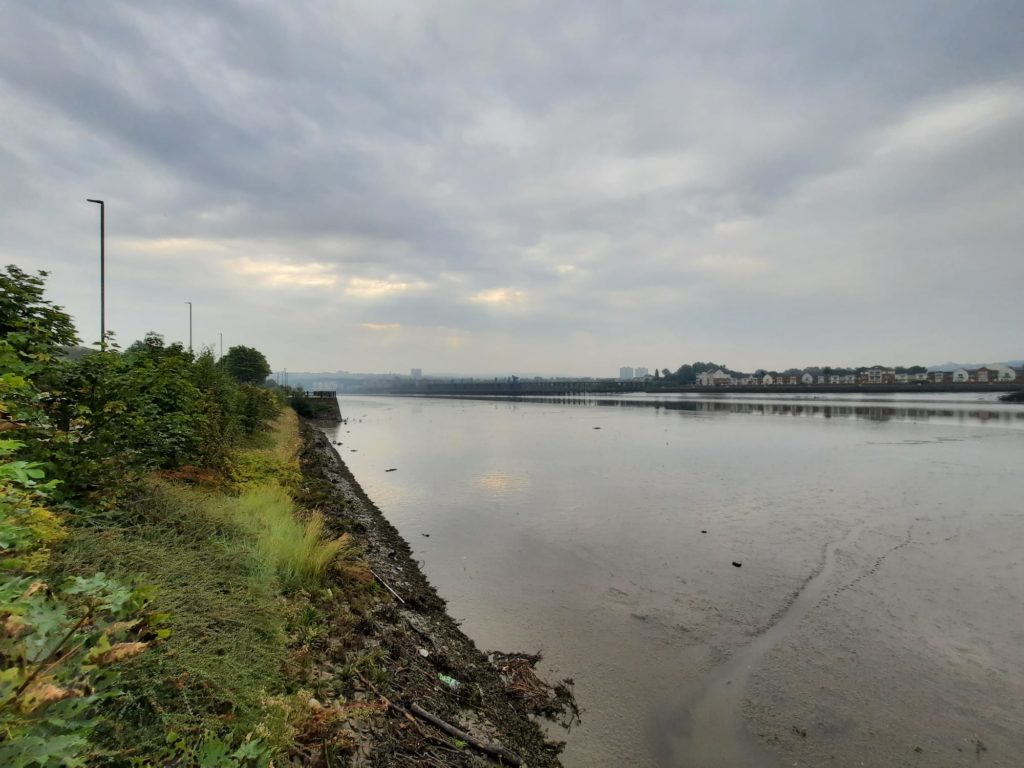
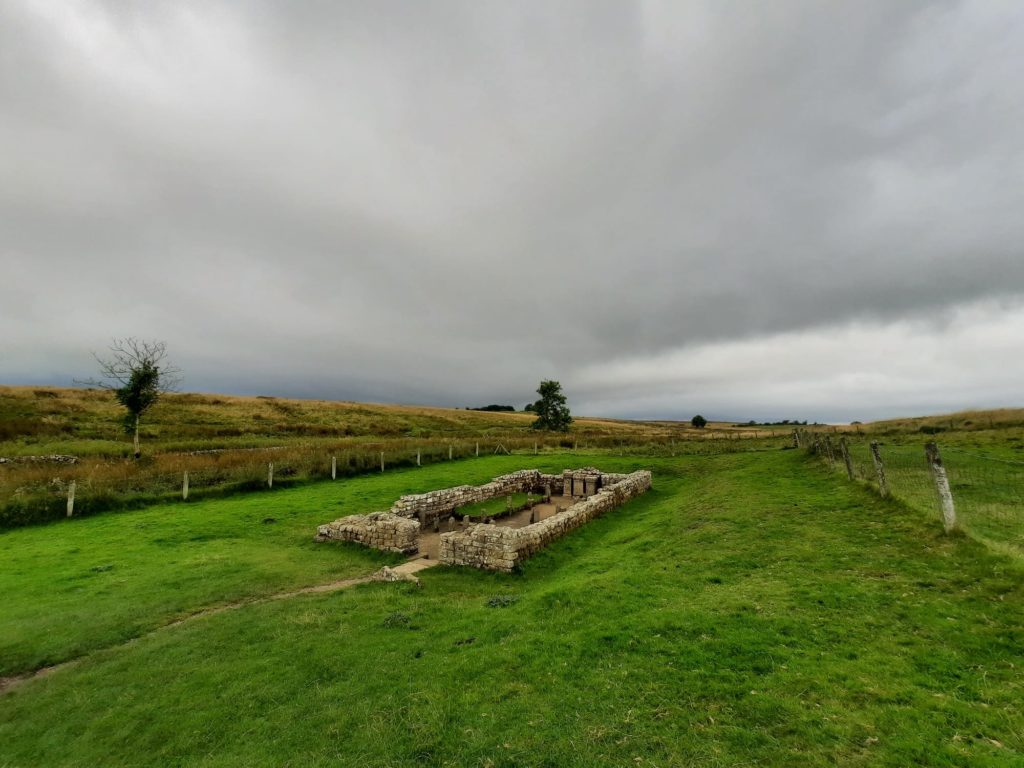
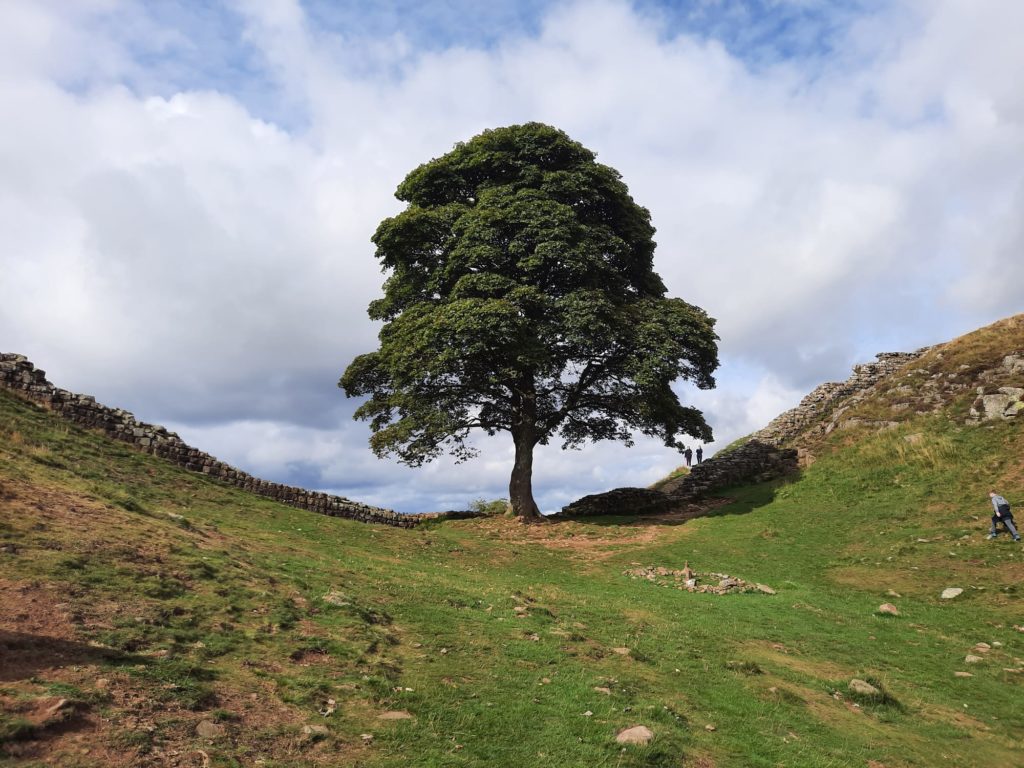
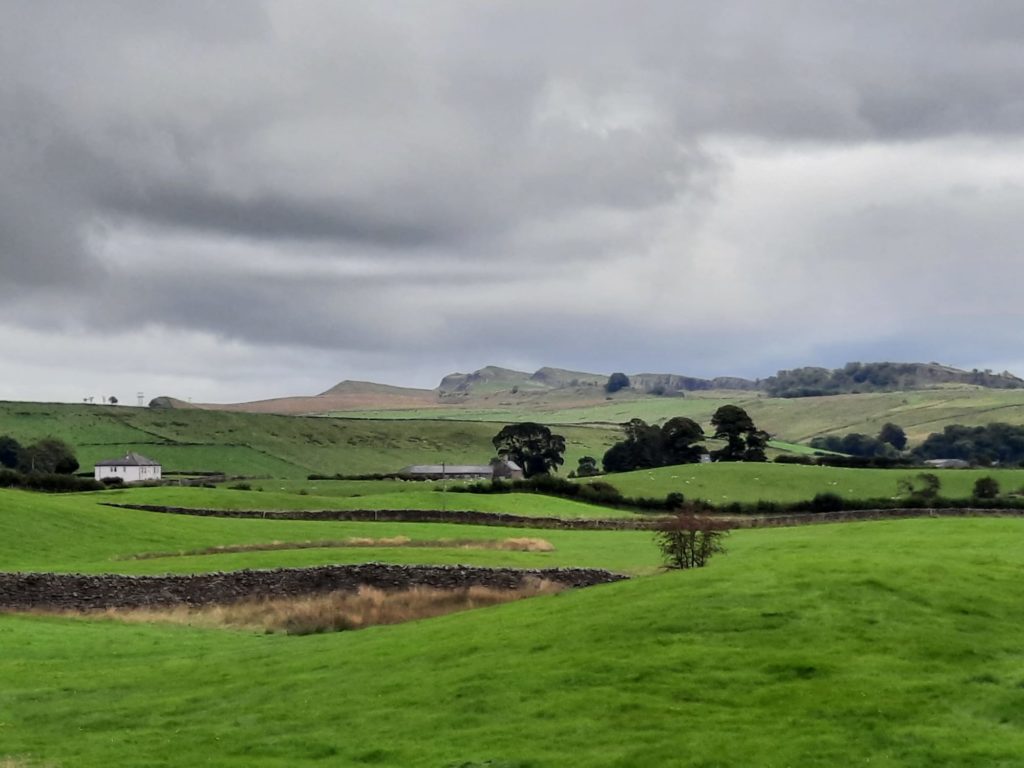
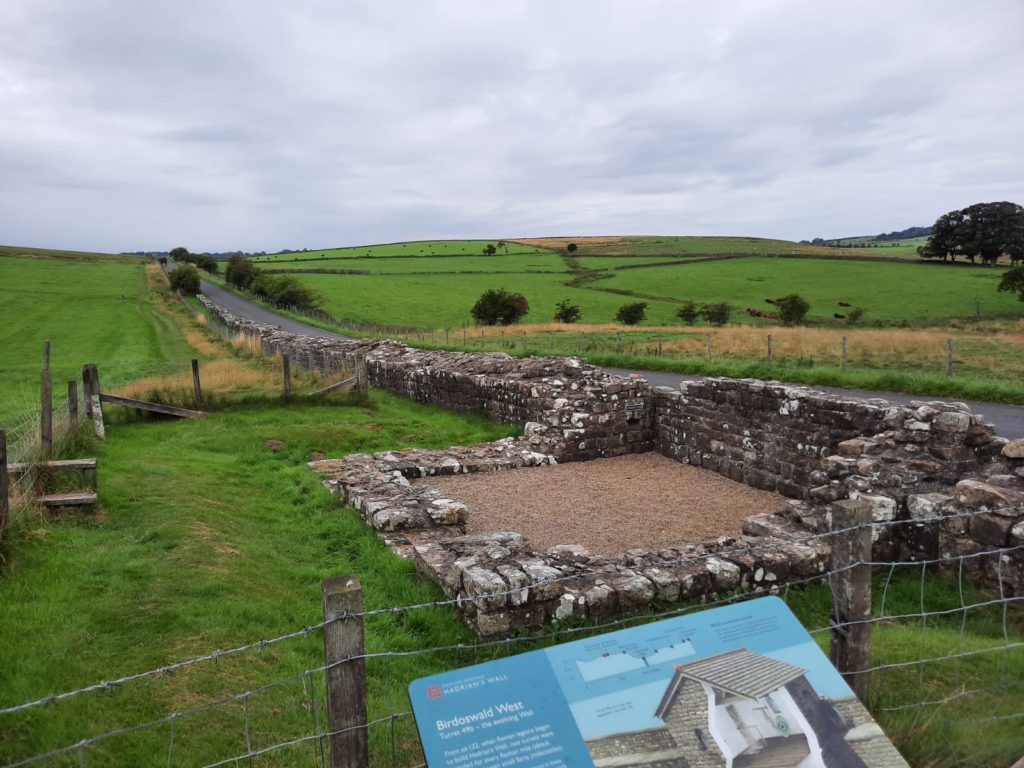
Forts and Detours on Hadrian’s Wall: Overview
In my last post, we looked at the history of Hadrian’s Wall, both Roman and later, and I shared some advice geared towards those who may wish to go and walk it for themselves. Today we are going to look at some of the things around Hadrian’s Wall – both forts and museums, and some of the recommended detours. Taken together, this might give you an idea of how quickly or slowly you want to do the Hadrian’s Wall walk to give you time for some of these added extras.
There are a lot of archaeological excavations along the course of Hadrian’s Wall. The wall itself was over 100 km in length. Plus a wall is never just a wall. You need people to maintain and patrol it. And those people need places to live, which requires supplies and services, which means nearby farms and towns. And so on. Plenty to dig up. As we saw in the last post, a lot of early archaeology and protection of sections of the wall was thanks to a man named John Clayton. Clayton bought up land with remaining Wall sections to save the stone being reused elsewhere. He also financed and got involved in a lot of archaeological digs including at his family estate, Chesters.
Hadrian’s Wall Honourable Mentions
Since these early beginnings, the heritage industry has taken off. There are plenty of schools, families and individuals who will happily spend a few hours at a Roman site or museum, as well as all the Hadrian’s Wall hikers. However, even at a fairly leisurely 7-8 day pace to complete the Wall walk, it’s hard to squeeze in many extras. On longer walking days you will arrive at your destination at 4pm or later, so not much time to race around a fort (not that it stopped me!). Or if you wait and fit something in in the morning, you risk a late start to the day’s walking.
So even an avid heritage enthusiast like me didn’t make it to everything. Before I start on the places I did get to, let me list a few of those I didn’t, but which may take your fancy if you’re doing the Hadrian’s Wall walk or are in the area.
From East to West
Arbeia South Shields Roman Fort: past the end of the wall, beyond Newcastle. Seems quite interactive, with reconstructed buildings
Great North Museum: Hancock: Romans and much more in this Newcastle museum
Corbridge: a detour from the wall which includes a Roman town with a museum and display of a hoard (English Heritage)
Vindolanda: I really wanted to visit this one but couldn’t quite squeeze it in. A large fort which was occupied until the 9th Century, plus a museum. Can be visited on a joint ticket with the Roman Army Museum
Roman Army Museum: as the name suggests, this museum focuses on the lives of Roman soldiers rather than archaeology and artefacts. Can be visited on a joint ticket with Vindolanda
Tullie House Museum and Art Gallery, Carlisle: has a great Roman Frontier gallery. I did in fact visit Tullie House but as it’s much more expansive than just a Roman focus, I’ve done a full post on it (here)
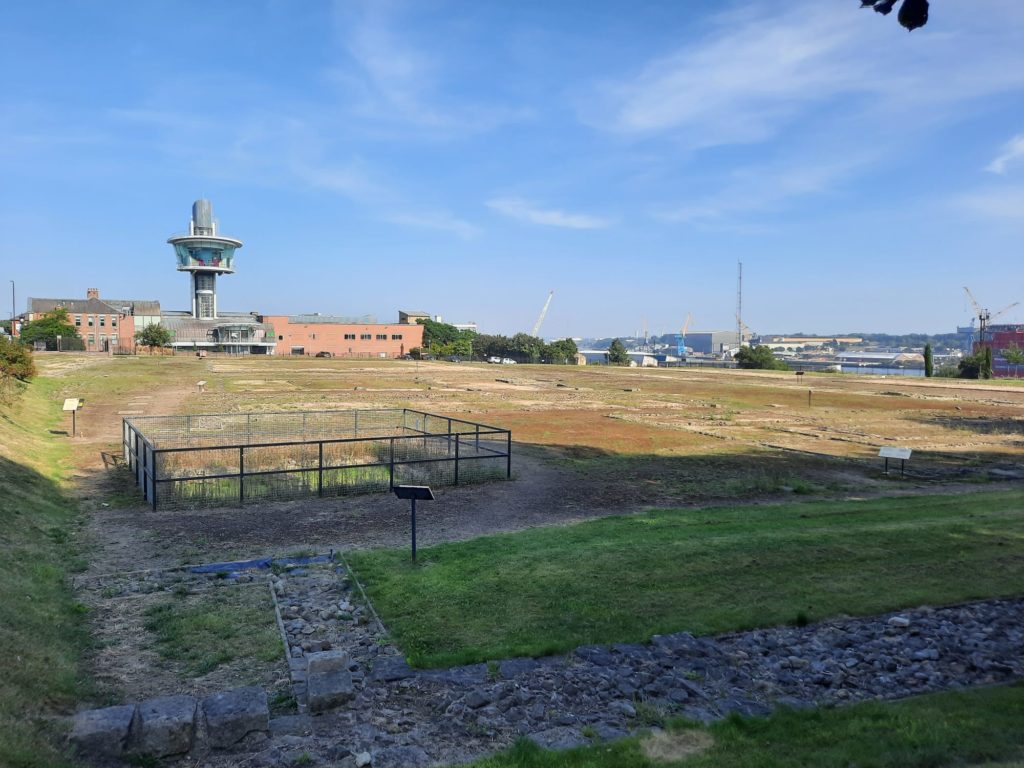
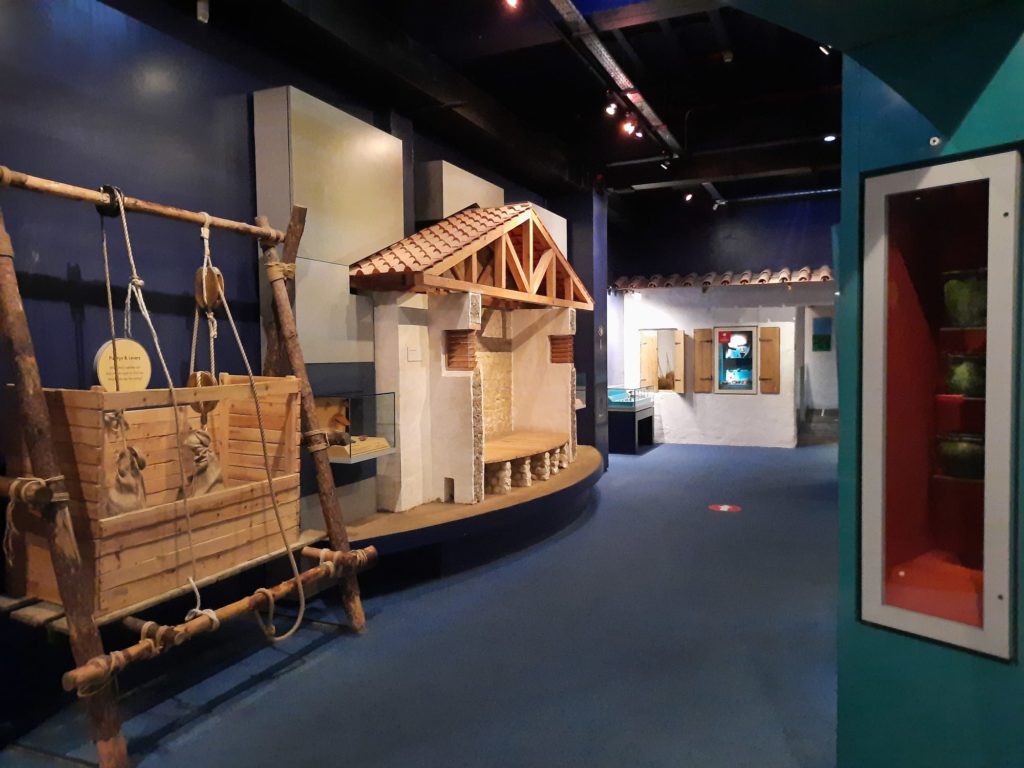

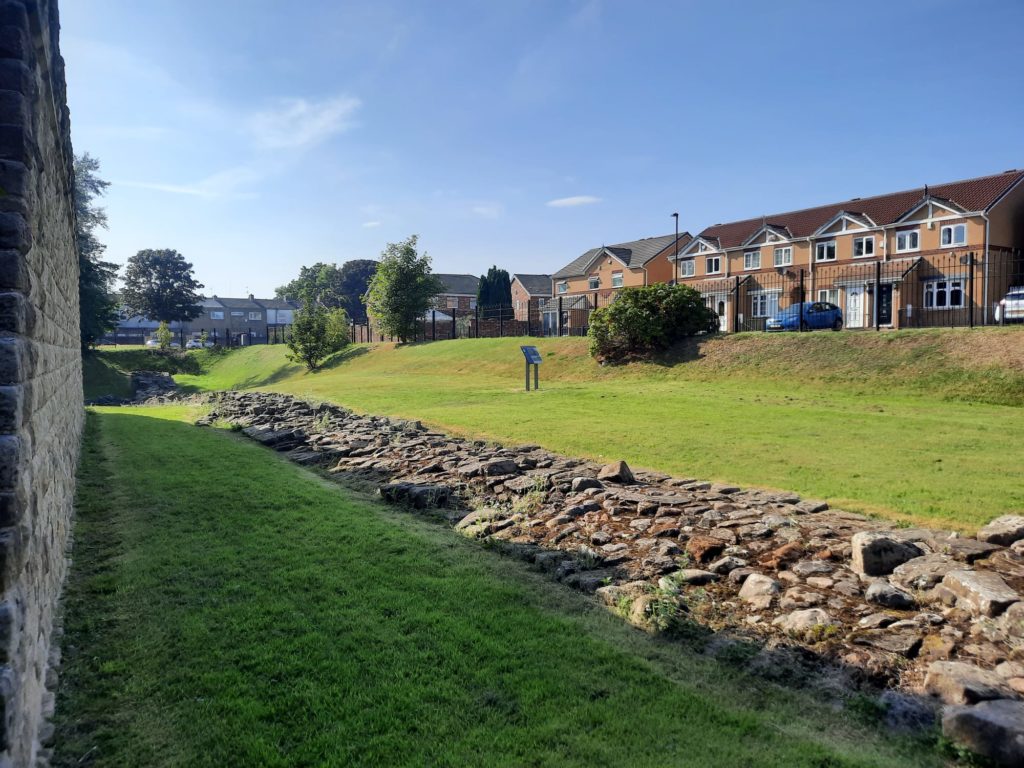
The Forts: Segedunum
Because we did our Hadrian’s Wall walk from East to West, Segedunum was where it all started for us. This is the official eastern-most point of the Hadrian’s Wall walk, the fort at the end of the Roman wall. On that note, the Newcastle suburb where Segedunum is located is the wonderfully-named Wallsend, which can be reached on Newcastle’s metro system.
Segedunum as a visitor attraction consists of an excavated fort, a viewing tower, a museum, and a section of original and reconstructed wall. This latter bit technically still requires a ticket for entry, but there were no staff there during our visit. I do recommend paying for entry, especially if this is the start of the walk for you, as it helps immensely to set the scene. The excavated site itself is a little underwhelming.
Another top tip from the Salterton Arts Review is that you can do as we did and come a day early. Our walking tour started on a Thursday, with the first section being 15 miles from Wallsend to Heddon-on-the-Wall. By heading to Segedunum on Wednesday when we arrived in Newcastle, we could visit the site at a leisurely pace. We then strolled back along the first few miles to Newcastle, without being loaded down with supplies. We thanked ourselves the next day.
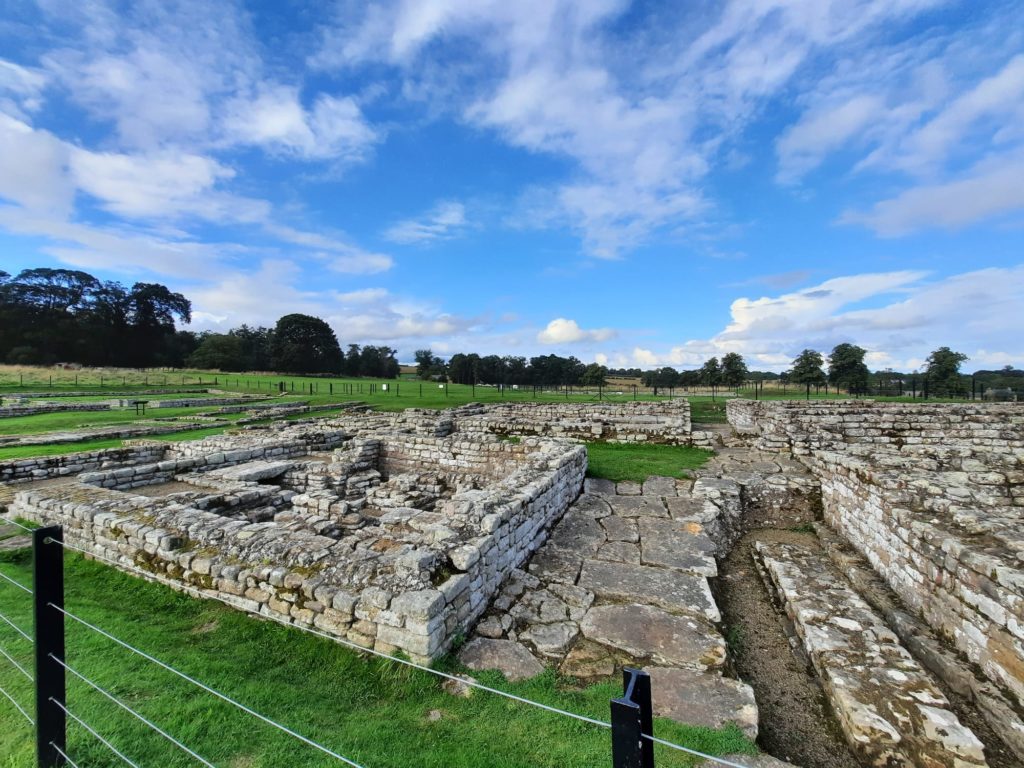
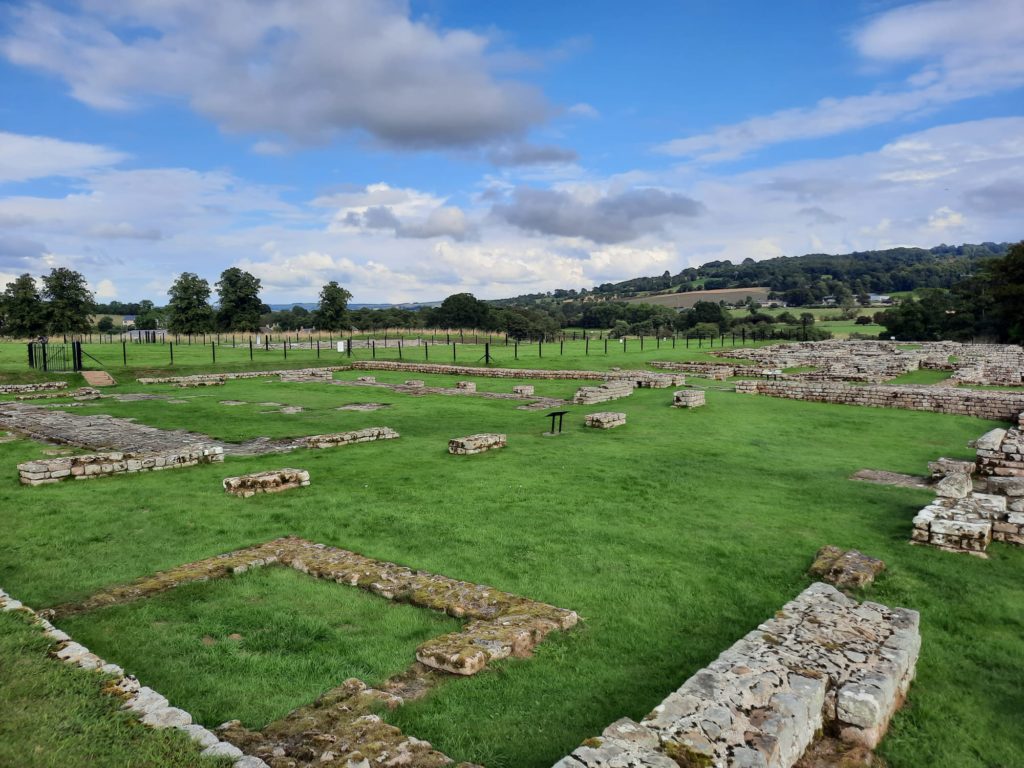
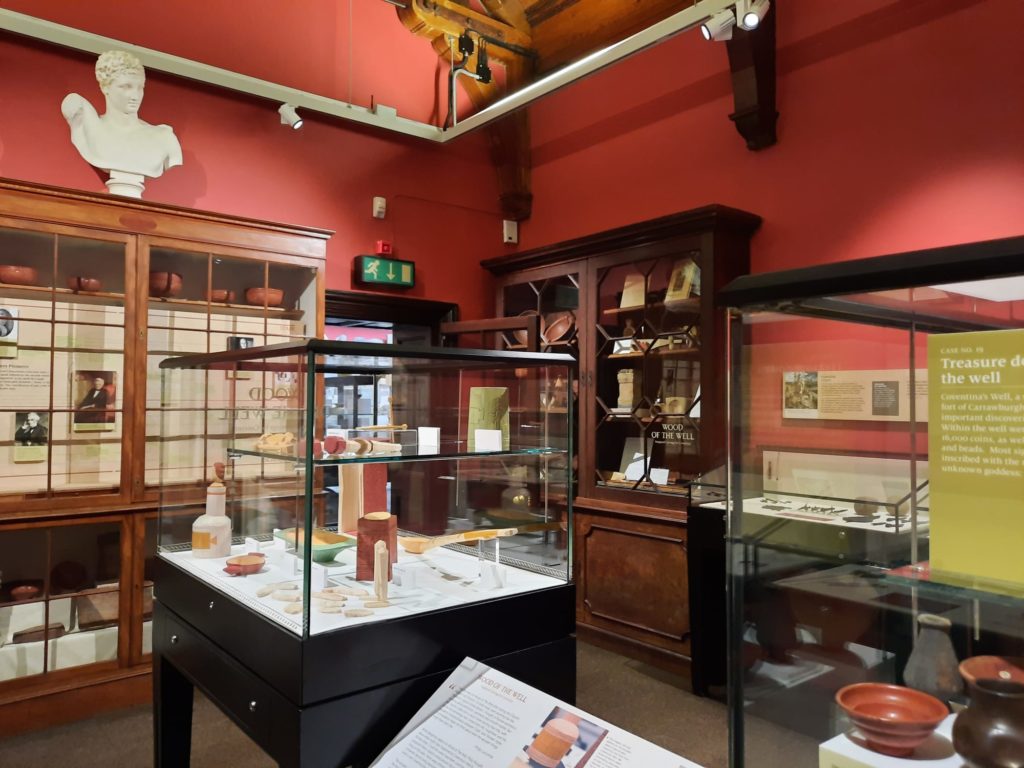
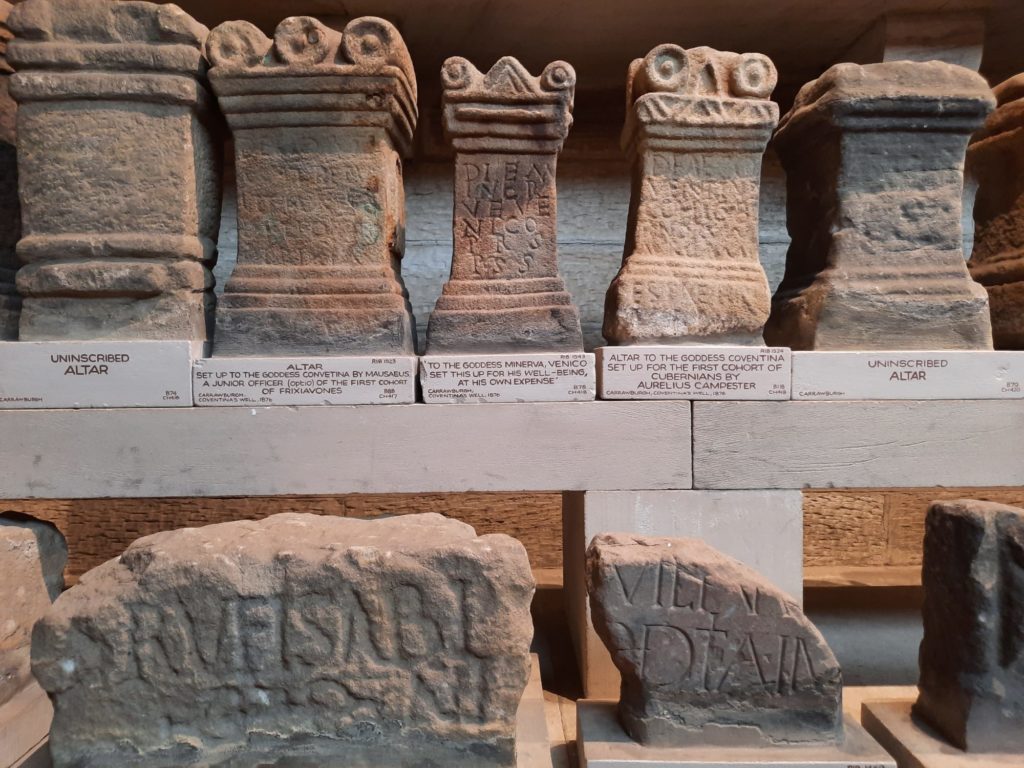
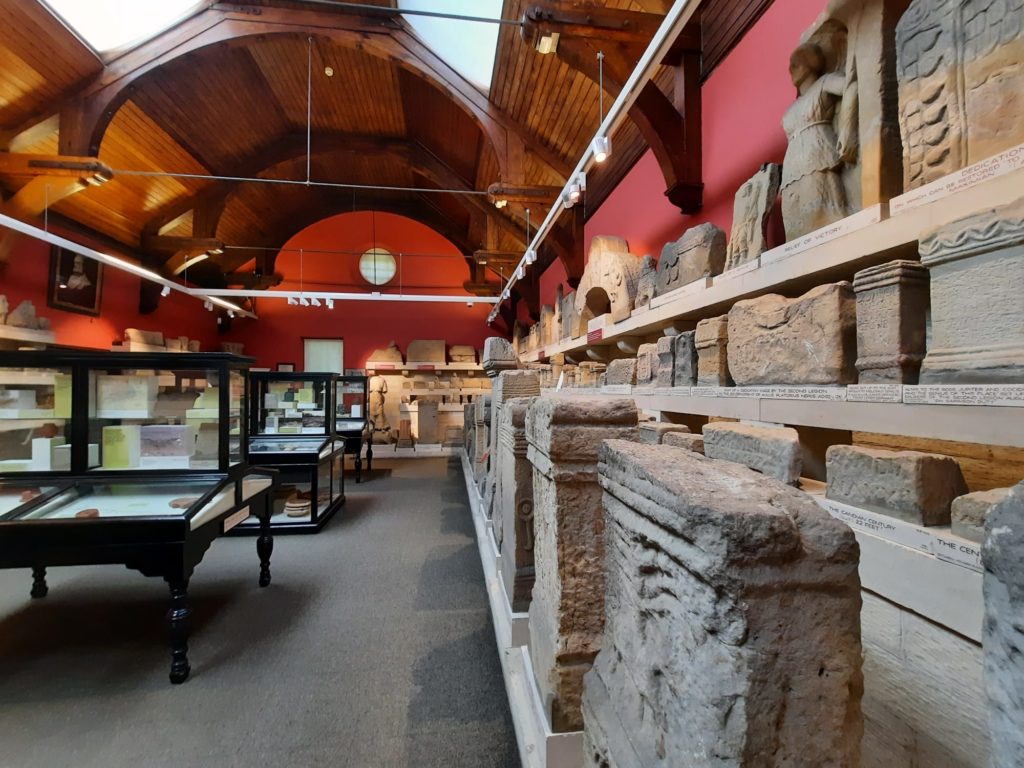
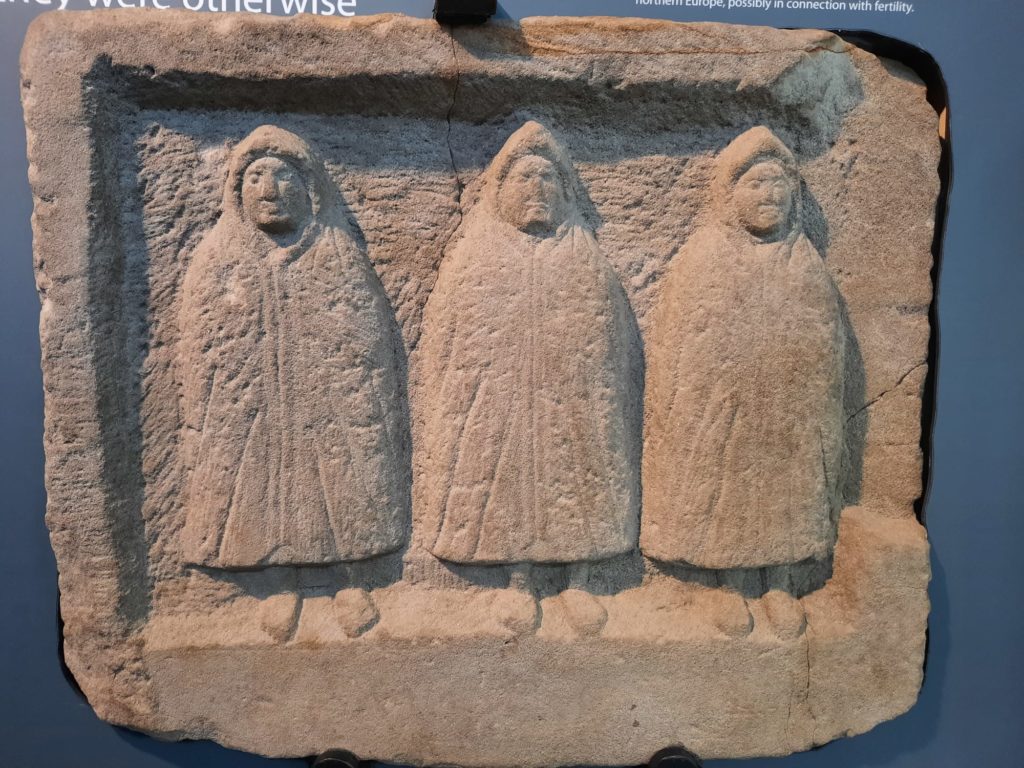
The Forts: Chesters Roman Fort
Chesters Roman Fort is one of the spots where we arrived at 4pm, and had to race around before it closed at 5. Despite this, it was probably my pick of the Hadrian’s Wall forts and museums. As previously mentioned, Chesters onced belonged to John Clayton. In fact, it piqued his interest in Roman antiquities and Hadrian’s Wall specifically. The house is still there today, but that’s not what you visit. Instead there is an extensive set of excavated ruins of a bathhouse and cavalry fort. Plus a museum of Roman finds, which is delightfully old-fashioned with glass-fronted display cabinets.
The charm of the museum is a big part of why I liked Chesters best of the forts that I visited. But the excavations are also interesting. Much more of the walls remain than at Segedunum where you’re basically looking at the outline of foundations. Especially great is the bathhouse complex, in a peaceful spot even today, overlooking a river. I would love to have spent a lot more time here.
Chesters Roman Fort and Museum is managed by English Heritage. They will try to sell you a membership. We declined, but in hindsight so many of the Hadrian’s Wall sites are run by English Heritage that it might have been worth it. Have a think about this before you set out on your own walk.
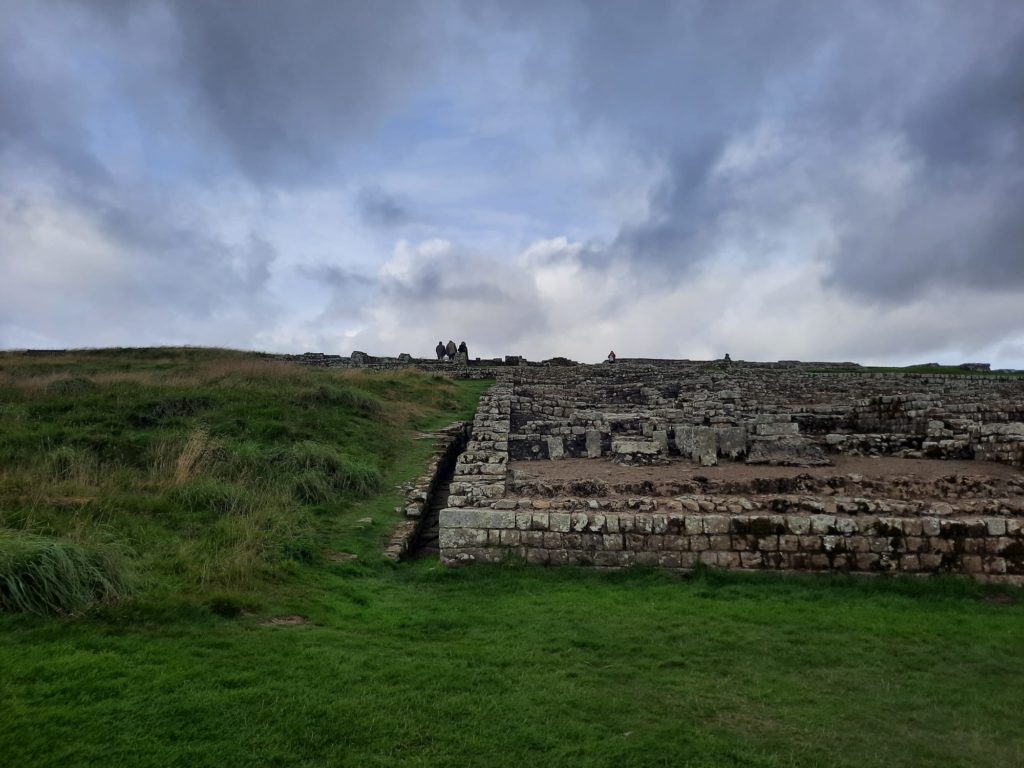

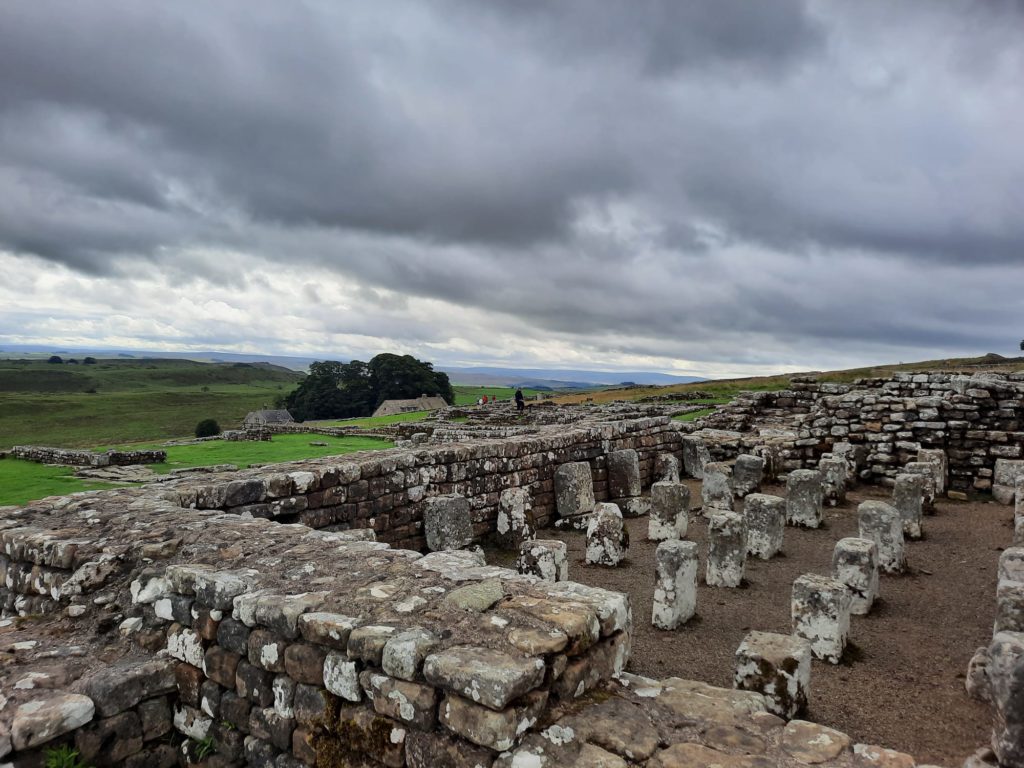
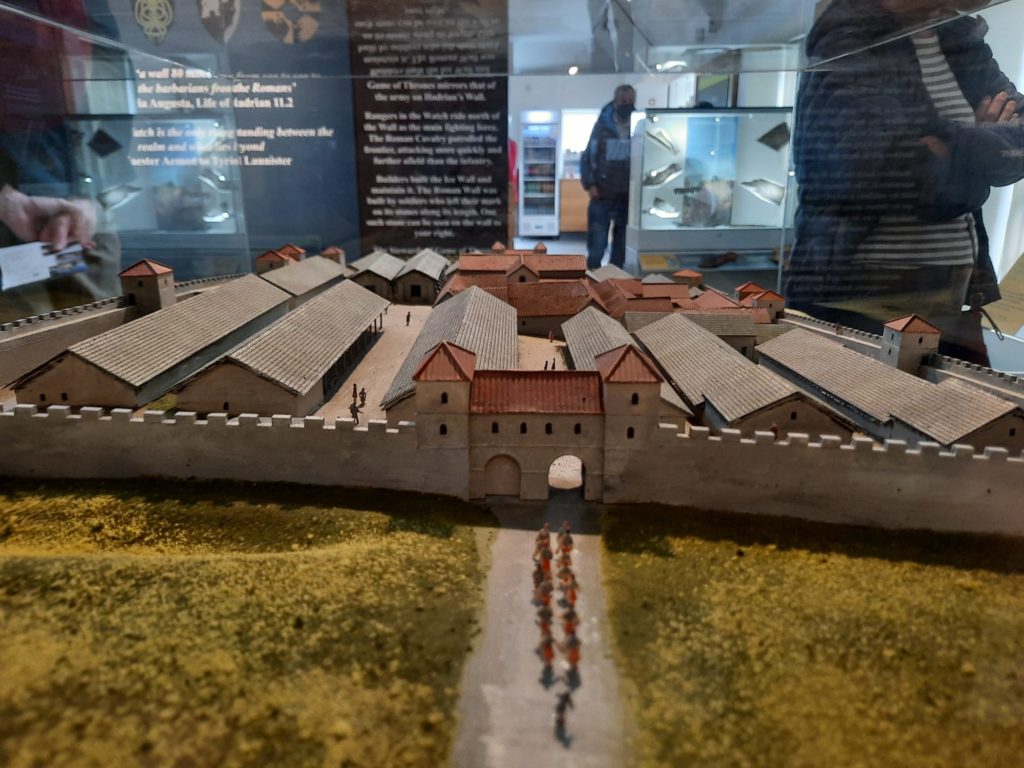
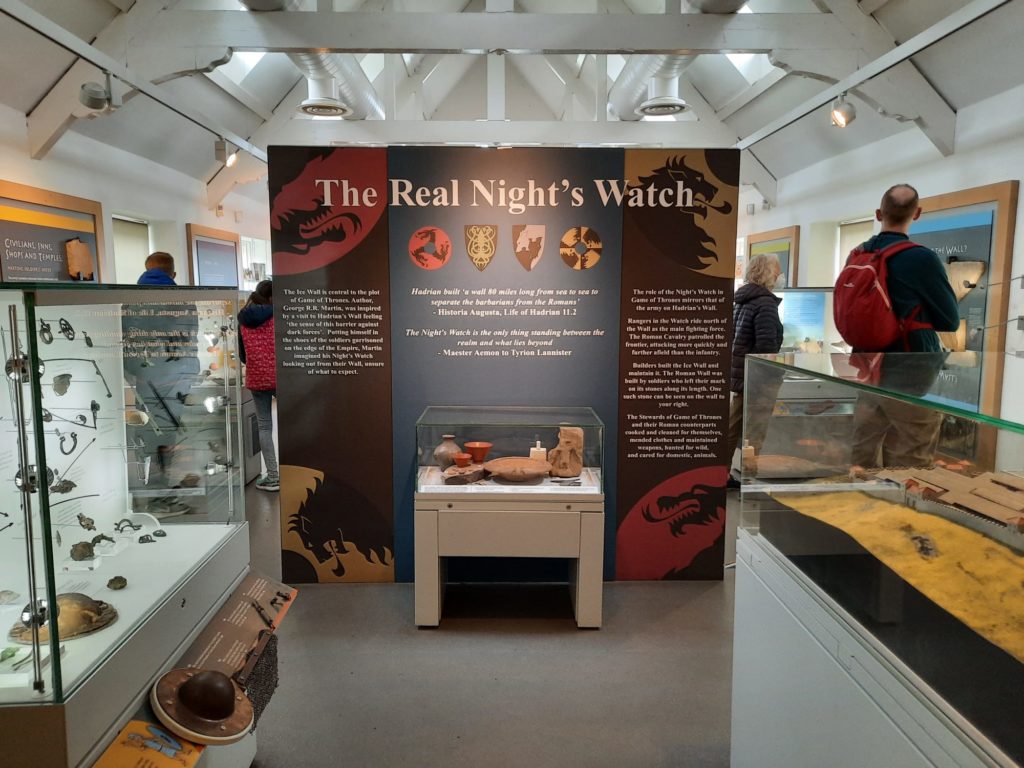
The Forts: Housesteads
This was the only time that we came to a fort in the middle of a walk rather than at the beginning or the end. This meant we could take our time, and even stop to have lunch on site. The downside to that plan is that Housesteads is quite high and exposed so was cold and blustery when we were there.
Housesteads is another English Heritage site consisting of an excavated fort and museum. It was the busiest one we visited, with a queue to get into the museum when we arrived. The small museum is quite nicely presented, even if, as you see above, it has capitalised on Game of Thrones to engage with visitors.
Outside, the fort is extensive (although less so than Chesters), with several recognisable buildings. Guides will likely draw your attention to a communal latrine, for instance. You can also see where a fortified house was built into the fort walls to guard against later Reivers. I didn’t feel it was particularly distinctive in comparison to Chesters or Birdoswald, though. Plus you can see a lot of the site as the Hadrian’s Wall Path skirts around it. So make up your own minds as to whether you want to stop and pay to visit.
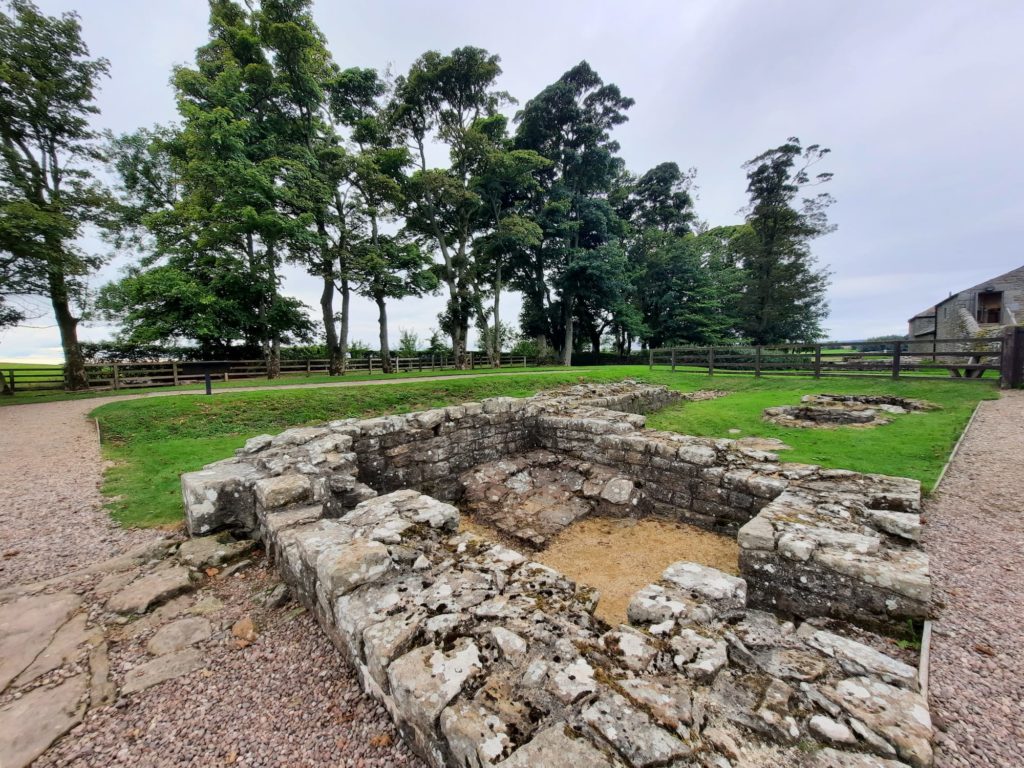

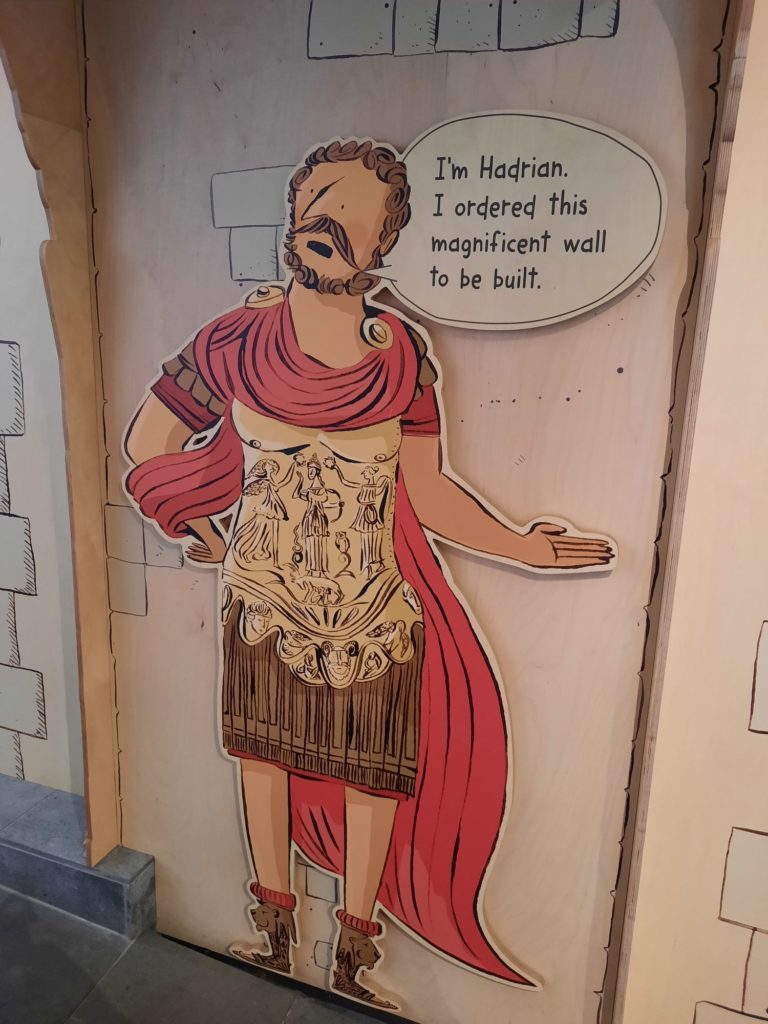
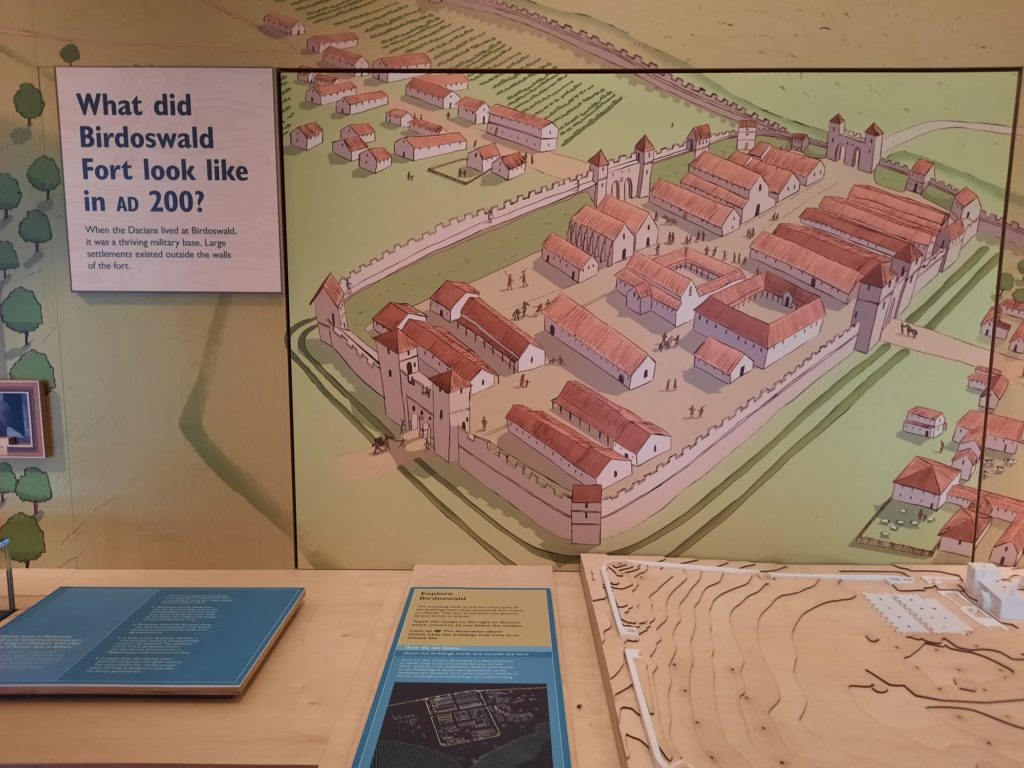
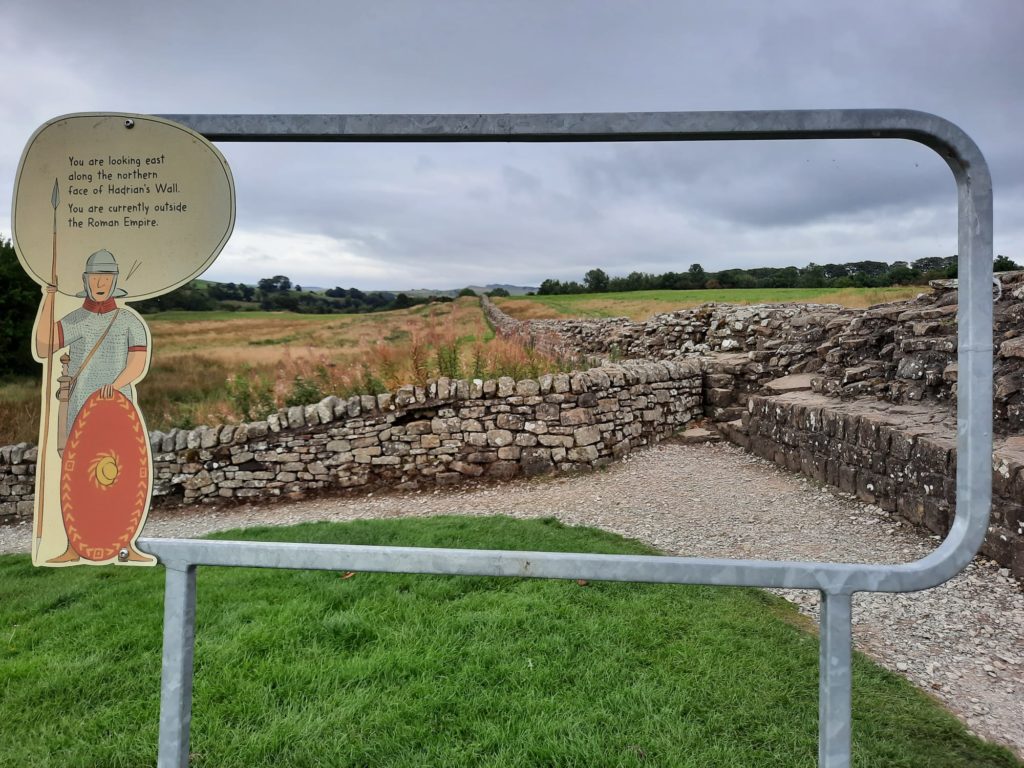
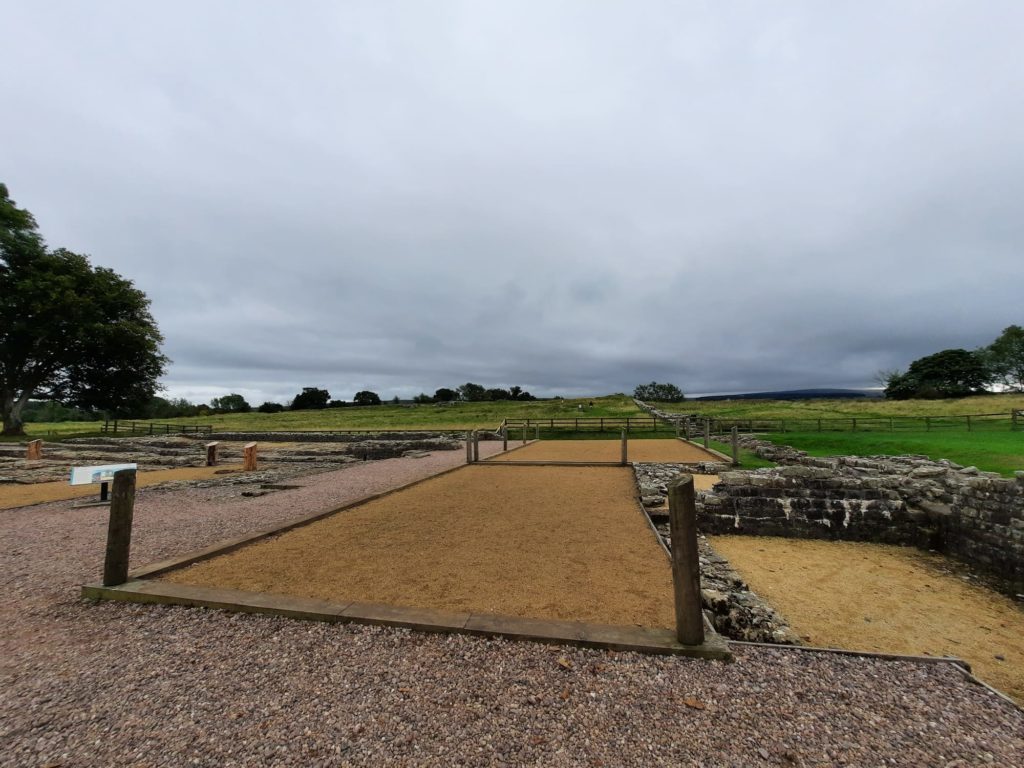
The Forts: Birdoswald
This was the third and final English Heritage Roman fort that we visited along Hadrian’s Wall. It was also the second one where we arrived at 4pm or so. This time I left my other half at the courtyard cafe and visited on my own. His appetite for archaeological sites is smaller than mine at the best of times…
What I really liked about Birdoswald was the interpretation of the site. You can see some examples above. The style is engaging and fun, with family activities (or activities for grown museologists who love interactives). There seems to be a lot of evidence for occupation of Birdoswald continuing beyond the Roman period. They do a particularly good job of helping visitors to understand these layers and their traces on the landscape.
I would love to have spent longer here, rather than whipping around quickly, photographing everything and looking suspiciously at the gathering clouds on the nearby hills.

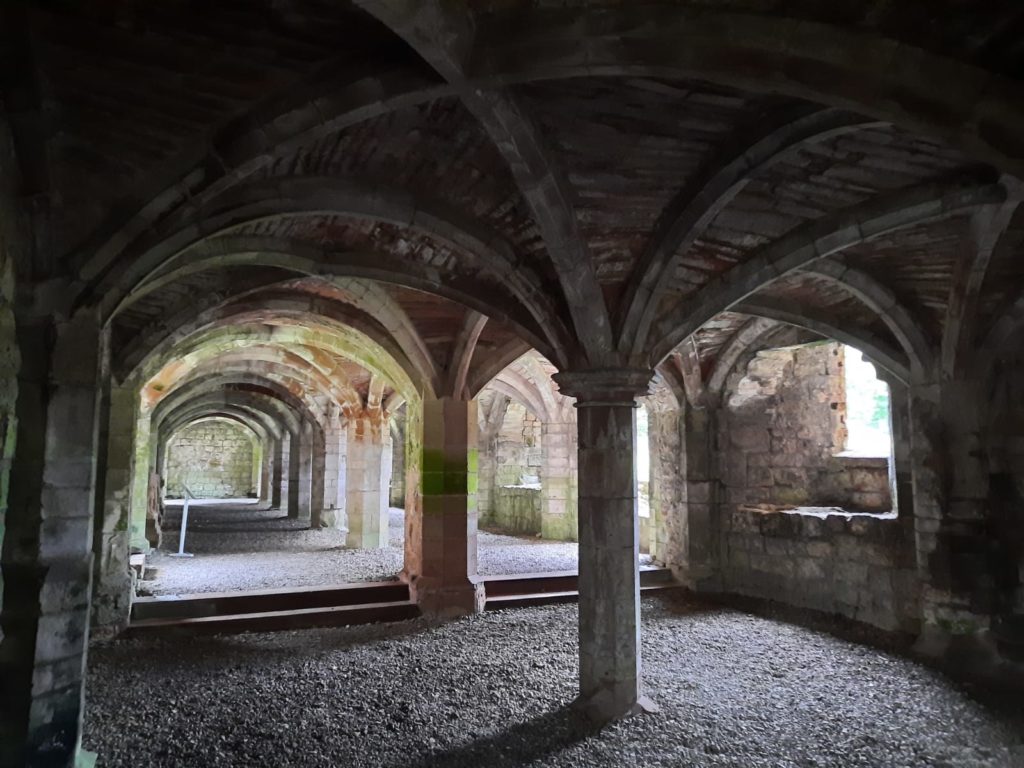
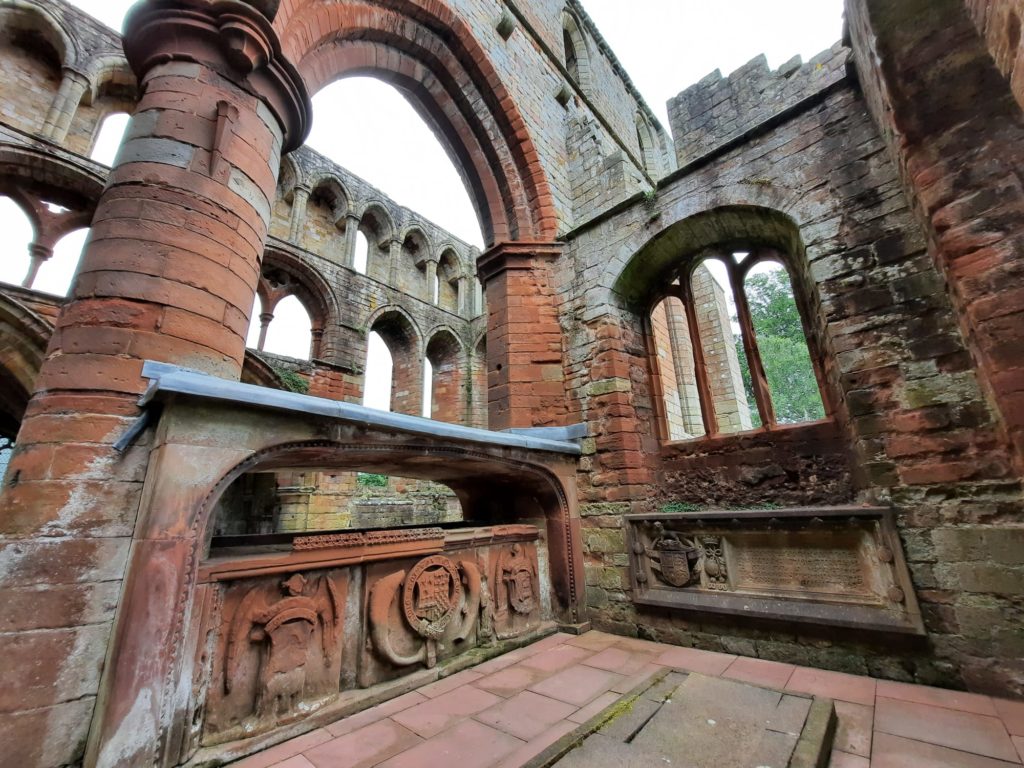
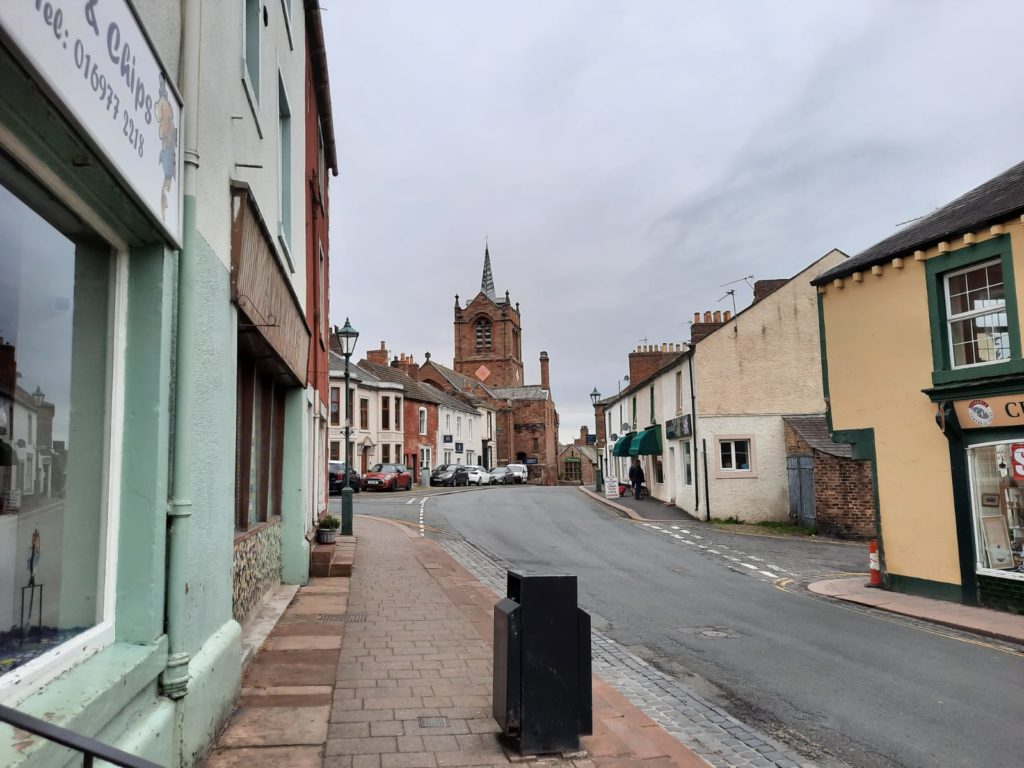
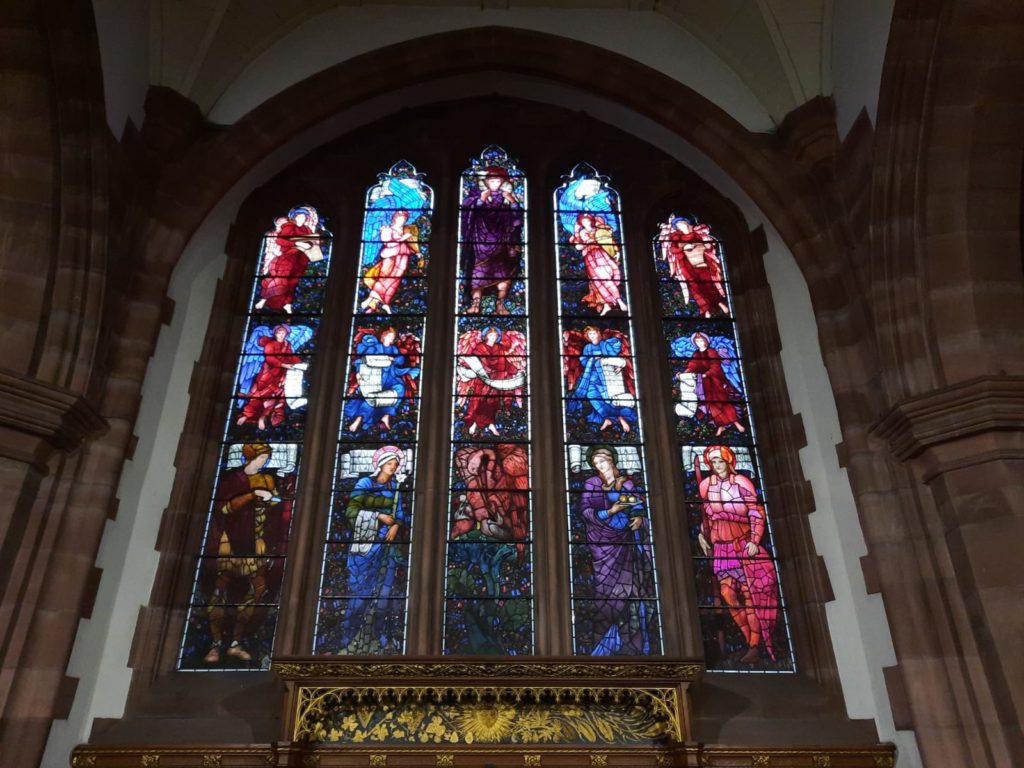
A Detour From Hadrian’s Wall: Lanercost Priory and Brampton
Our Hadrian’s Wall itinerary didn’t involve a detour to Corbridge, but we did have a night in Brampton. This meant that one day of our Wall walk actually involved very little Wall. We walked about 90 minutes from Birdoswald to a spot called Haytongate, and then veered off to Brampton.
The walk to Brampton takes you straight past yet another English Heritage site – Lanercost Priory. We stopped in here; it was quite nice to see some history of a different era after a few days of Roman focus. Lanercost Priory was home to Augustinian monks until the Dissolution of the Monasteries under Henry VIII. Like many such monastic properties (see Wilton House), Henry then gave it to one of his mates who turned it into a family home. Lanercost continued in this way for some time, but today is a set of ruins with an attached (intact) church.
The other thing to see in Brampton, at least for history and art nerds like me, is St Martin’s Church. This is the only church designed by Pre-Raphaelite Philip Webb. It has a smashing (pardon the pun) set of stained glass windows by Edward Burne-Jones. I’m not actually clear whether you can visit it right now. I thought you could from what I had seen online. But we happened to arrive at the same time as the guardian’s daily rounds, and when we left the door was set to lock after us. So perhaps we were just extremely fortunate. It’s a nice church, and worth a look if it’s open.
That brings me to the end of my Hadrian’s Wall excursion. I hope you have enjoyed these posts and find them useful!
For more UK travel inspiration as well as arts, culture and heritage, sign up below to our weekly newsletter:
If you see this after your page is loaded completely, leafletJS files are missing.

